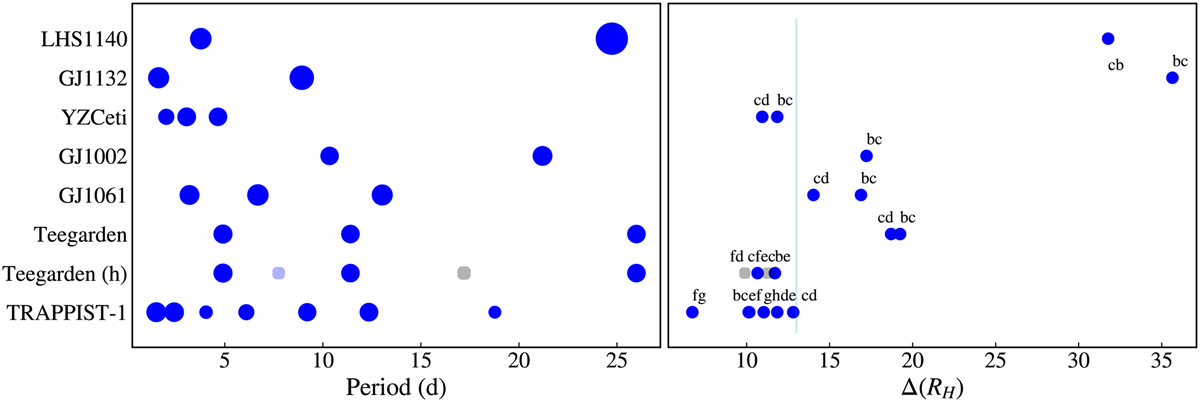Fig. 6

Download original image
Planetary system architectures in comparison. Left panel: semi-major axes in planetary systems in comparison. For Teegarden’s Star we show two possible configurations: the three planets as fit by our preferred model and a hypothetical configuration (labeled as Teegarden (h)) with the three planets, the candidate at 7.7 days (light blue) as well as a purely hypothetical planet between planets c and d (light gray). The size of the plot symbols in the left panel are scaled assuming a constant planet density using the masses from Tables 2 and Table G.2. Right panel: mutual Hill separations in planetary systems in comparison. The light blue line indicates the mutual Hill radius above which the orbital crossing time is larger than 109 orbits.
Current usage metrics show cumulative count of Article Views (full-text article views including HTML views, PDF and ePub downloads, according to the available data) and Abstracts Views on Vision4Press platform.
Data correspond to usage on the plateform after 2015. The current usage metrics is available 48-96 hours after online publication and is updated daily on week days.
Initial download of the metrics may take a while.


